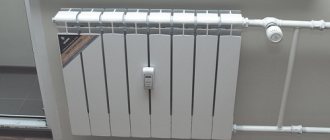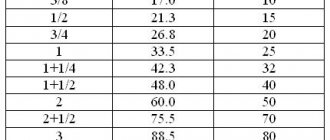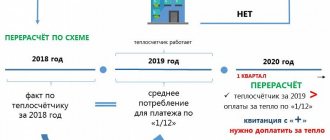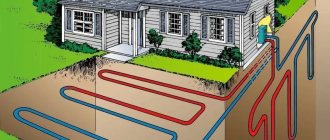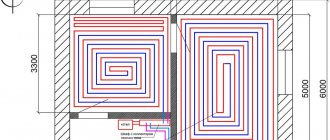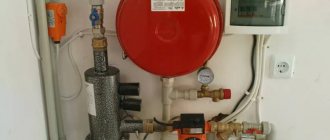Author of the article
Yulia Kuprina
Certified lawyer. Total work experience in the specialty is 13 years.
You can pay for thermal energy in different ways. The size of the fee depends not only on the number of batteries and the area of the apartment, but also on whether the apartment has heat meters. Let's figure out whether an individual heat meter is needed in an apartment building, where it is installed and how to take heat meter readings.
Why do you need a heating meter?
An individual metering device (hereinafter referred to as IMU) is necessary to take into account the amount of resource consumed in one apartment. Almost every apartment has meters for electricity, hot and cold water. This is the standard. But heat meters are not installed everywhere.
The current legislation does not contain rules obliging residents in apartment buildings to install IPU for heating. This is primarily due to the peculiarities of building houses.
The utility company is obliged to install a common house metering device (hereinafter referred to as UDPU), which takes into account the amount of thermal energy consumed in the entire house. But this rule does not apply to some older houses. Read a detailed article about installing a communal heat meter in an apartment building.
We list some features of installing the IPU on a battery:
- Purchase, installation, as well as periodic repairs and verification are entirely at the expense of the apartment owner.
- The technical possibility of installing IPU on batteries does not exist in every apartment. For example, in old houses, in which the heating system has horizontal wiring, you will have to install the device on almost every pipe in the apartment. This is difficult, costly, and most often not economically feasible. And the utility company is unlikely to coordinate the receipt of information about the amount of resource consumed from different metering devices.
- Not all resource supply companies are ready to accept and maintain heating accounting according to IPU. This is especially true for older houses. Before installing meters on the battery, this issue must be agreed upon with the resource supplier.
Types of heating meters
The thermal energy meter records and measures, using an ultrasonic or tachometer method, the temperature difference, as well as the flow rate of coolants.
This equipment is classified as measuring instruments, and therefore must have the appropriate documents and certification that meets the requirements
Manufacturers offer 2 types of household meters:
- budget option - tachometer;
- more expensive - ultrasonic.
Having decided to install a heat meter, the owner needs to order the development of a project that will take into account the technical features of the apartment.
The material “Heat meters for heating in an apartment” will help you not to make a mistake in choosing a suitable device.
How to take readings from the heat IPU
Before taking readings from the heat meter, read the instructions for the device. Readings are taken differently in different models. Usually, to do this you need to dial a combination (sequence) of buttons. Readings from the heat meter are taken by reading data from the monitor. But in addition to the necessary data, the display can contain information about the power and the temperature of the supplied heat. This information is not taken into account when calculating the heating fee.
Typically, a heat meter shows consumption in a similar way to water meters. We need numbers to the decimal point. There is no need to write numbers after the decimal point.
The unit of measurement is gigacalories (Gcal); it is in these units that heat consumption for payment is measured.
Every month on the same date, agreed upon with the resource supply company, you need to look at the numbers on the meter and report them.
Usually the fee is calculated based on the difference in the readings taken, that is, how much was consumed - what was paid for. But not in the case of calculating heating fees. Here, when calculating the fee, complex formulas will be used that take into account several indicators at once.
Taking readings from an individual heat meter
Before taking meter readings, you should carefully read the technical documentation, which contains information about the functional features and rules for servicing the equipment.
As a rule, meters provide the ability to visually read data using an LCD display.
The obtained power consumption values and temperature data are used not for settlement with the service provider, but for monitoring consumption.
Different models provide several user levels, the transition between which is performed by pressing a button. The meter display displays several data at once, so you should be careful not to make a mistake about which heat meter readings to provide.
There are also more modern heat metering devices combined with automation tools. With their help, you can automatically or remotely read the necessary information.
Storing readings in an archive
According to clause 37, the thermal energy metering unit is equipped with a variety of metering devices, which are included in an indelible archive of the main technical characteristics and adjustment coefficients.
The information can be displayed on the meter display or on a computer.
In accordance with this regulatory act (clause 34), all metering devices are equipped with standard protocols, interfaces for remote data collection, and can be equipped with an hourly, daily, monthly and annual readings archiving module:
- heat consumption and total operating time;
- operating and downtime;
- temperatures in the heat pipe.
Remote transmission of readings
Heat meter readings in the apartment can be transmitted via the Internet. This possibility is fixed by the provisions of the above-mentioned Resolution No. 1034. For this, metering devices must have the function of using telemetry systems and the corresponding software.
If there is reason to doubt the reliability of the readings and the correct operation of the heat meter, the consumer or heat supply organization has the right to organize an inspection. If disagreements arise, it is quite possible to initiate an extraordinary verification of the meter.
Laws on heat meters
List of regulations governing payment for heating by meter in an apartment building from 2022:
- The Housing Code of the Russian Federation, which sets out the initial provisions for the maintenance and payment of housing and communal services.
- Federal Law No. 190-FZ dated July 27, 2010, regulating the procedure for the production and transfer of heat, as well as all other relations arising in this area.
- Rules..., approved. RF PP dated 05/06/2011 No. 354 with amendments that came into force in 2022. They detail the procedure for calculating payments for heat, the quality of the supplied energy resource, as well as the procedure for installing heating meters.
- RF PP dated July 29, 2013 No. 642, which contains the rules for hot water supply.
- RF PP dated July 29, 2013 No. 644, which contains the Rules for cold water supply and sanitation.
- RF PP dated November 18, 2013 No. 1034, which contains the basic requirements for heat metering units.
- Other acts in the field of water supply, as well as GOSTs and SNiPs.
Is there heating in common areas
In the second part of the video, Elena Shereshovets examined new formulas for calculating heating fees, which the Russian Government developed in accordance with the resolutions of the Constitutional Court of the Russian Federation.
According to the resolution of the Constitutional Court of the Russian Federation dated 04.27.2021 No. 16-P, the Cabinet of Ministers approved the resolution dated 06.25.2021 No. 1018. It introduced into the RF PP No. 354 the norm that consumers in apartment buildings with unheated common areas pay only for individual heat supply. The payment for one-way taxation was excluded from the calculation (clause 42(1) of the RF PP No. 354):
How to switch to direct contracts with a non-centralized hot water system
52782
How to pay: options and formulas
Payment for heating, as well as the procedure for calculating it, depends on the following conditions:
- if there is no ODPU;
- if ODPU is installed;
- if it costs IPU heat.
Let's consider each case separately.
There is no ODPU heat in the house
If there is no ODPU heat in the house, you need to calculate the heating according to the standard, but depending on the following indicators:
- A tariff that is determined by a regulatory act of the tariff authority of a constituent entity of the Russian Federation. In other words, each region has its own tariffs.
- Area of the apartment (living space). Balconies and loggias are not included in this parameter.
- Established consumption standards in Gcal, which are determined by regulations. In each region, authorities independently determine this figure. It depends on climatic conditions.
The heat payment will be calculated using the formula:
P = N * T * P, where
P – payment;
N – standard established in the region;
T – tariff;
P – housing area.
As a result, the calculation does not depend on the actual amount of Gcal consumed. To increase the efficiency of heat supply, regulations have been adopted that determine the need to install metering devices.
ODPU is worth it, IPU is not
If the house is equipped with a common house heat meter, the calculation of the fee depends on the following indicators:
- The tariff, which is determined by the normative act of the tariff authority of the constituent entity of the Russian Federation.
- Heat consumption (calculated as the difference in readings taken from the meter).
- The area of the living space and the area of all other rooms in the house.
- Volumes of thermal energy.
In this case, the calculation formula will be much more complicated and for its final preparation it will initially be necessary to calculate the volume of thermal energy that is necessary for the residential premises in respect of which the calculation is being made (hereinafter referred to as indicator V):
V = S * ((V en / S rev – S ind + S oi)), where
S – area of housing (apartment);
S about – the sum of the areas of all rooms in this house;
S oi – the sum of the areas included in the common use property;
S ind is the total area of all rooms in which there are no heating devices or where there are other heating sources.
The formula for calculating the thermal energy fee will be as follows:
P = (V + (S * (V d – V) / Sob) * T, where
P – payment;
V – the volume of thermal energy that is necessary for the residential premises in respect of which the calculation is being made;
S – housing area;
V d – volume of thermal energy, calculated based on the readings of TDPU;
T – tariff.
There is a heat meter in both the house and apartment
If you have an apartment heat meter (IPU), and the house also has an ODPU, the calculation of heating fees will depend on the readings of the IPU heating meters.
The formula will consist of the following indicators:
P = ((V + V one * (S / S rev)) * T, where
P – payment;
V is the volume of thermal energy according to the readings of the IPU. The difference between the readings of the current month and the previous one is calculated;
V one - the volume of heat that entered the apartment building in public places (staircases, openings, basements, attics, etc.);
S – housing area;
S about – the total area of all premises of an apartment building;
T – tariff.
In this case, it is necessary to calculate V one using the formula:
V one = V d – V, where
V one - the volume of heat that entered the house in common areas (staircases, openings, basements, attics, etc.);
V d – volume of heat, calculated as the difference in the monthly readings of TDPU;
V is the volume of thermal energy calculated based on the readings of the IPU.
It is important that even if according to the IPU the amount of Gcal consumed is 0, you will still have to pay some amount for heating. This will be a payment for general house heating costs - for heating corridors and staircases.
